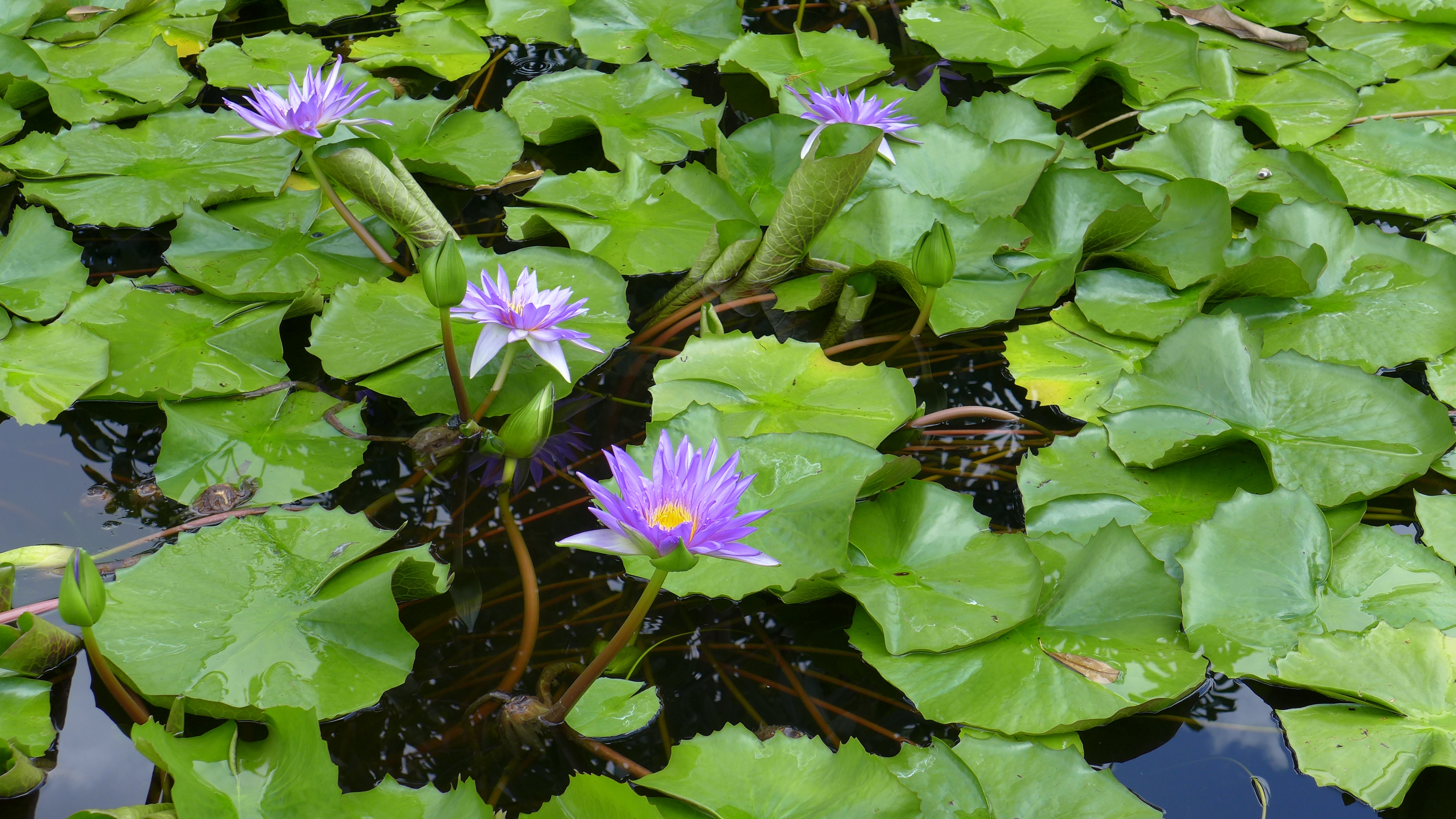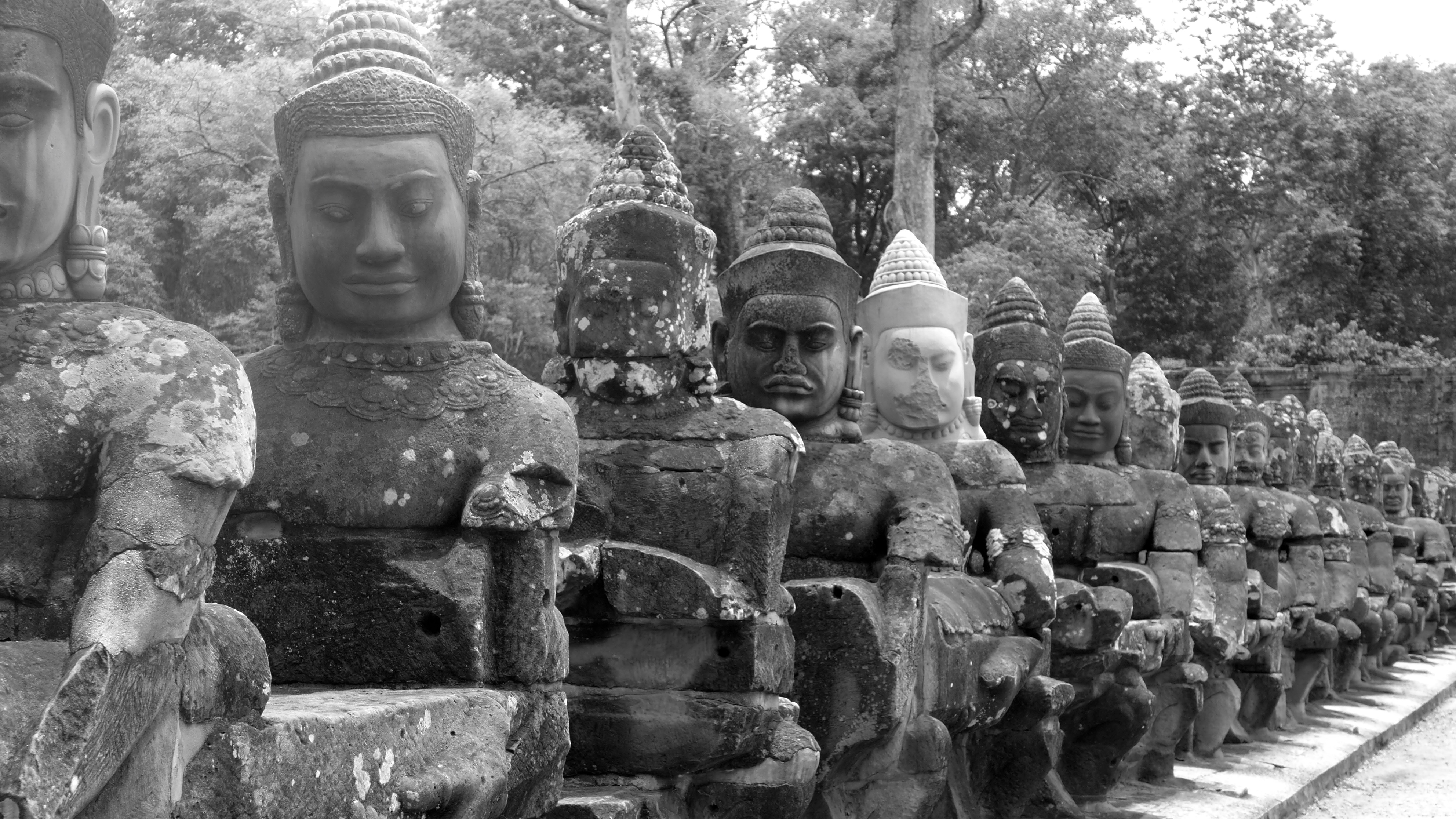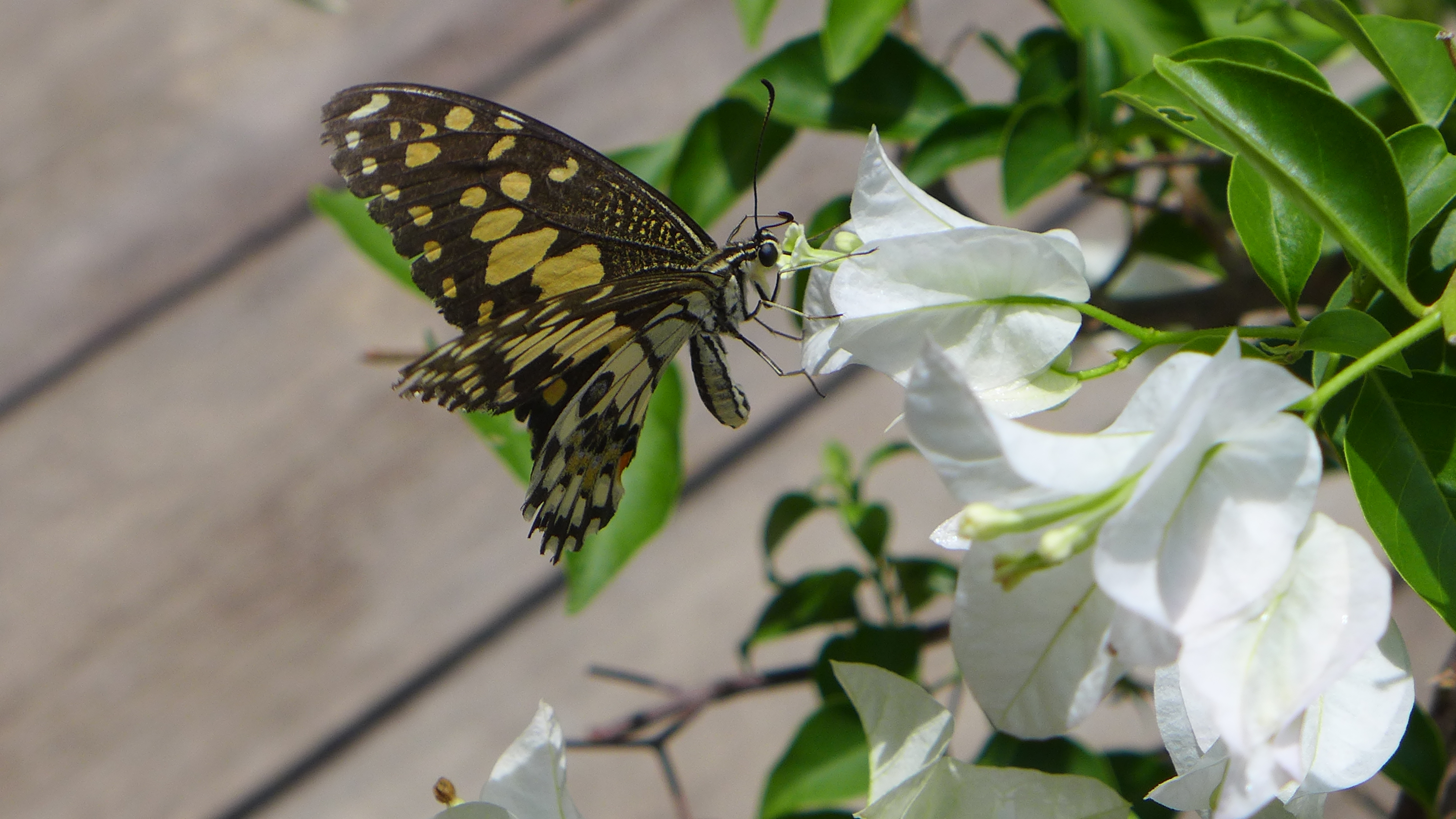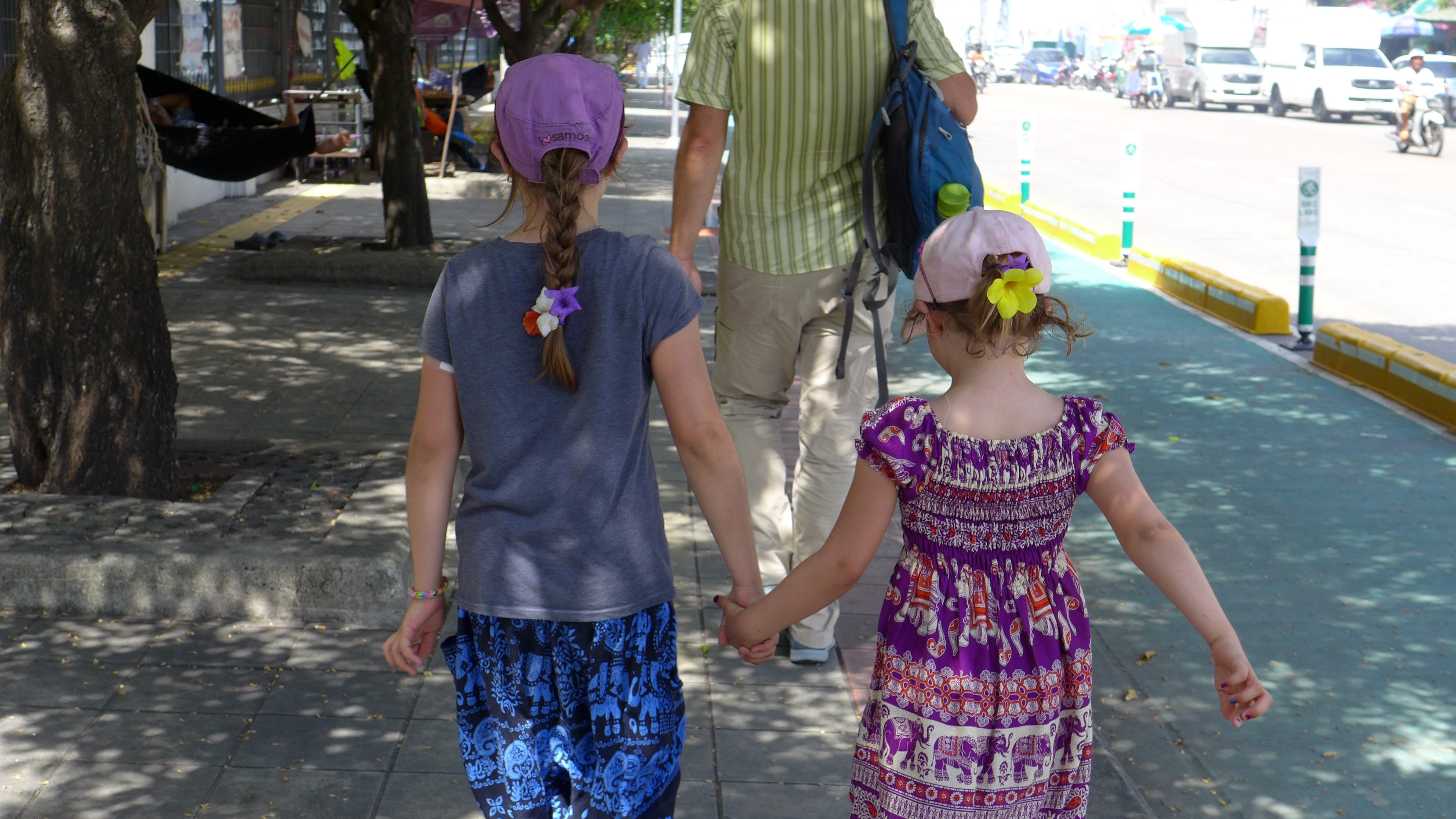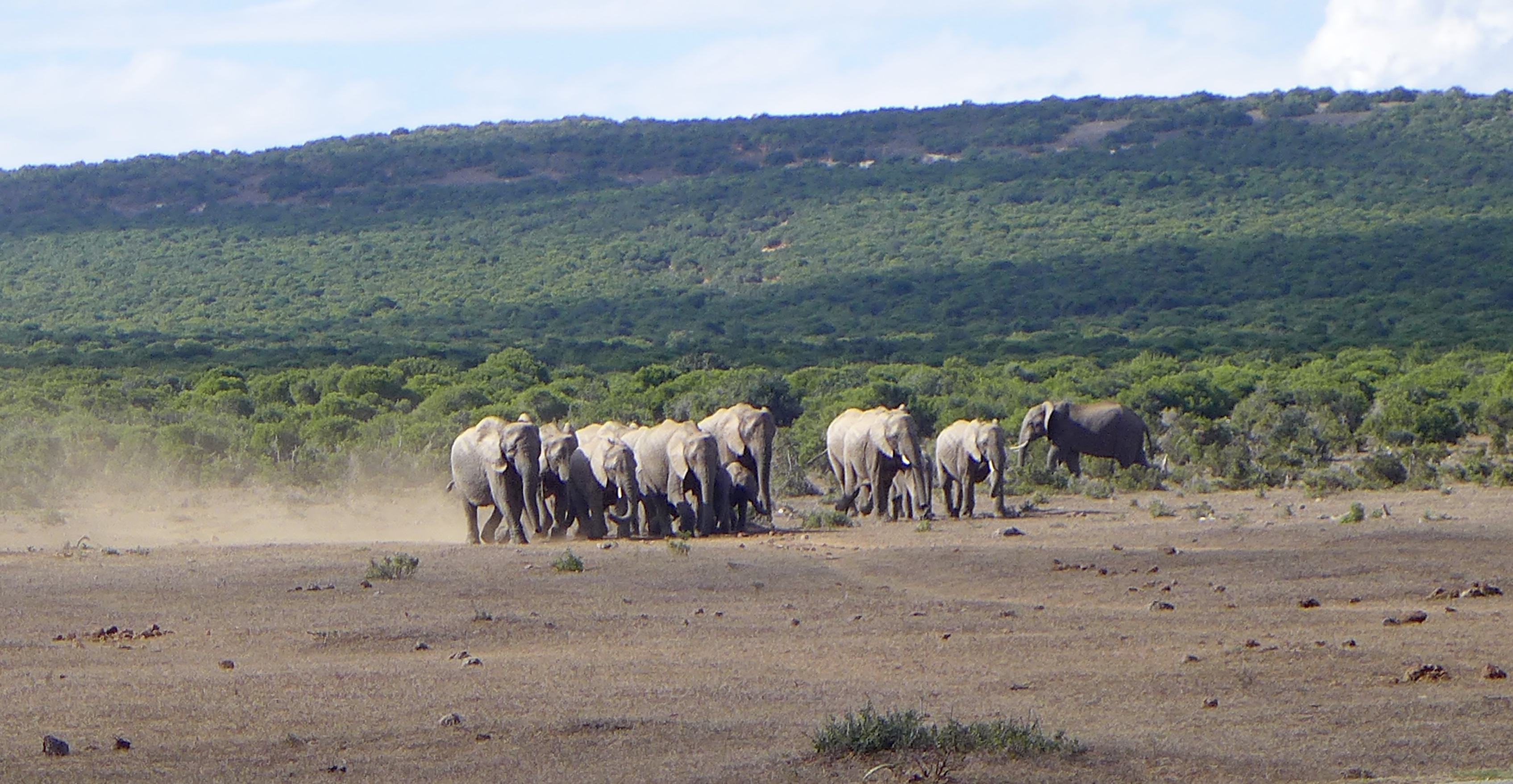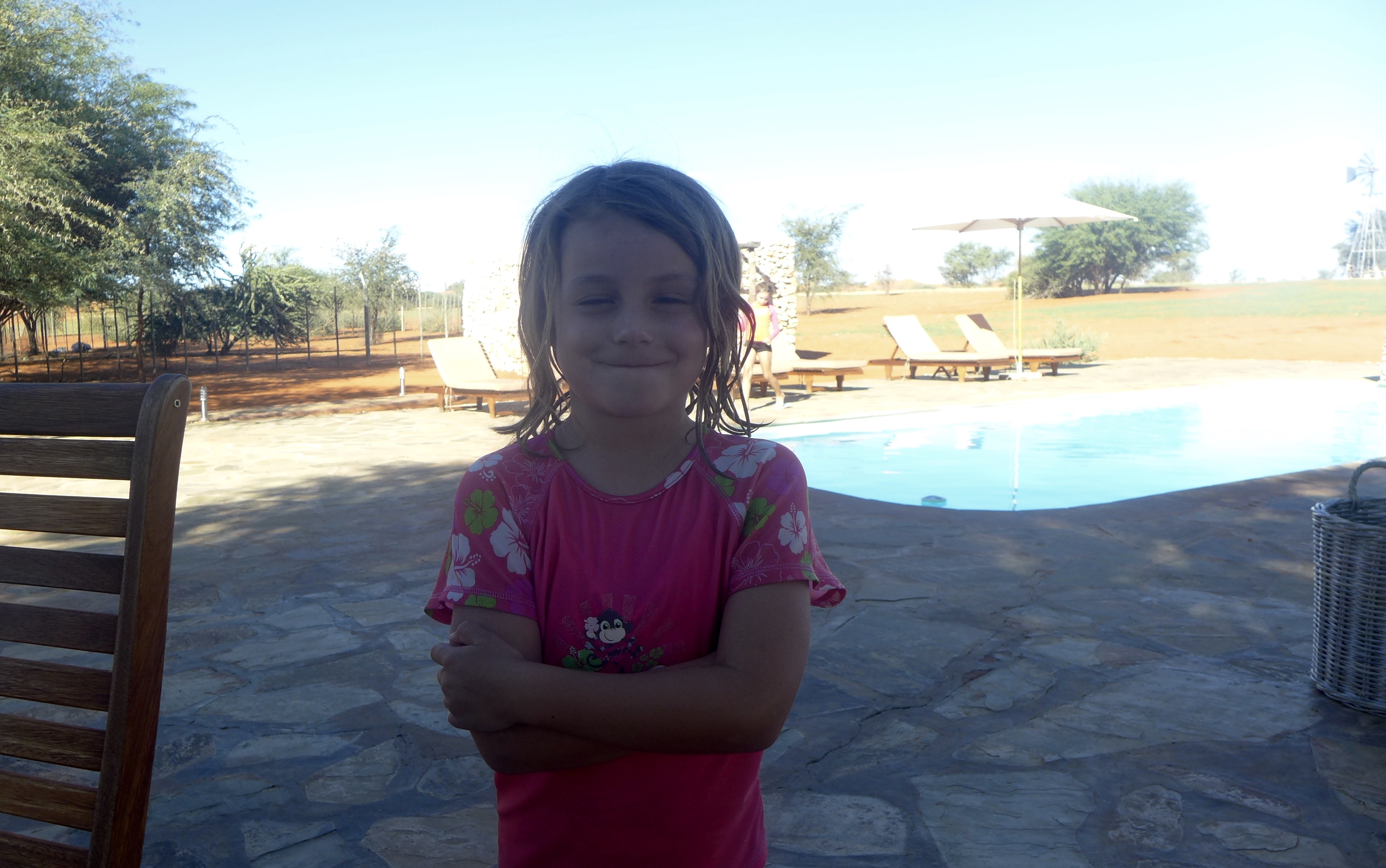Ho Chi Min City is a huge city packed with people, buildings and motorized vehicles. The overwhelming volume of motorbikes at rush hour causes an involuntary jaw-drop and a test of faith while crossing the street. It seems the trick is to move slowly and steadily making eye contact with the oncoming drivers. If you do it right, they can accurately predict your walking speed and gracefully move around you. The number one rule is: DO NOT STOP. If you stop or change your speed unexpectedly, accidents are bound to happen or at the very least you will receive a good crusty (remember those? Middle school girls in my era perfected that scowling glare). The city is also home to the War Museum, dozens of interesting pagodas and a not-bad art museum. I could talk about those places and get myself and you really depressed writing about the war museum with its gruesome pictures of the destruction from bombs and impact of Agent Orange but I just can’t do it this time. I need a pick-me-up. Plus, the experience in Ho Chi Min City that caught our attention the most was, you guess it, food.

In Vietnam, sometimes you find the best eats on the street and sometimes you find it by following the trail of tourists through review sites like Trip Advisor. Many avid travelers turn up their noses to Trip Advisor claiming the authentic experience is lost, which certainly can be seen in those restaurants around Vietnam who boast their trip advisor status with GIANT blown up pictures of the logo hanging beside their own sign. Perhaps it is true that some of these restaurants have lost their authenticity (especially those on the uber touristy backpacker streets) or perhaps using review sites is a way to find the new heartbeat in the city and the young budding chefs that are putting a modern spin on their hometown dishes.
One such place and my very favorite of all the food we tried in Ho Chi Min was at a restaurant called Mountain Retreat. Maybe it was because of their name (I needed a retreat from the city chaos by the time we went there) or the trail of red lanterns hanging down through the center of the twisting stairwell that took you up to their 5th floor digs. Maybe I loved it because it was filled with soft light from the bamboo basket light fixtures and the statues of the Buddha that were dotted throughout (you know I loved that). Ambience doesn’t always indicate that the restaurant will be special but creativity and vibe in the décor often means creativity in the food and this place did not disappoint. The Vietnamese people love their pork and you will find it in most dishes. At this restaurant we had BBQ pork ribs with a sticky lemongrass glaze. Vietnamese cuisine likes to find the perfect balance of sweet, salty, sour and spicy flavors and these ribs rang with that harmony. We also got our first taste of a popular dish called Bańh Tráng which is grilled, crispy rice paper topped with green onions, herbs and yep, pork. On the street you can find them folded up for easier consumption but here it was served pizza style. They added toasty sesame seeds to their rice paper and the creamy drizzle of a sort of aioli sauce on top pulled it all together, once again achieving the coveted balance of the 4 S’s.
Maybe it was because of their name (I needed a retreat from the city chaos by the time we went there) or the trail of red lanterns hanging down through the center of the twisting stairwell that took you up to their 5th floor digs. Maybe I loved it because it was filled with soft light from the bamboo basket light fixtures and the statues of the Buddha that were dotted throughout (you know I loved that). Ambience doesn’t always indicate that the restaurant will be special but creativity and vibe in the décor often means creativity in the food and this place did not disappoint. The Vietnamese people love their pork and you will find it in most dishes. At this restaurant we had BBQ pork ribs with a sticky lemongrass glaze. Vietnamese cuisine likes to find the perfect balance of sweet, salty, sour and spicy flavors and these ribs rang with that harmony. We also got our first taste of a popular dish called Bańh Tráng which is grilled, crispy rice paper topped with green onions, herbs and yep, pork. On the street you can find them folded up for easier consumption but here it was served pizza style. They added toasty sesame seeds to their rice paper and the creamy drizzle of a sort of aioli sauce on top pulled it all together, once again achieving the coveted balance of the 4 S’s.
 Another of my favorite entrees in Ho Chi Minh City was Bún Thįt Nuóng or BBQ pork noodle salad. We ate this at another spectacular restaurant called Propaganda but Mackenzie and I also learned how to make it during a cooking class we took together on one of our last days in the city. The thinly sliced pork is marinated in fish sauce (an ingredient found in most dishes), lemongrass, honey and garlic and is then barbecued over an open flame. The pork is then laid atop a bowl of rice noodles, Vietnamese basil, mint, shredded Morning Glory stems and other greens. Then the dressing, whose key ingredients include more fish sauce and kumquat juice, is poured on top. As you can imagine diving into this bowl of smoky sweet pork and fresh herbs with the snap from the kumquat juice will stop all conversation at the table until it is finished. Oh, how I miss you Ho Chi Minh!
Another of my favorite entrees in Ho Chi Minh City was Bún Thįt Nuóng or BBQ pork noodle salad. We ate this at another spectacular restaurant called Propaganda but Mackenzie and I also learned how to make it during a cooking class we took together on one of our last days in the city. The thinly sliced pork is marinated in fish sauce (an ingredient found in most dishes), lemongrass, honey and garlic and is then barbecued over an open flame. The pork is then laid atop a bowl of rice noodles, Vietnamese basil, mint, shredded Morning Glory stems and other greens. Then the dressing, whose key ingredients include more fish sauce and kumquat juice, is poured on top. As you can imagine diving into this bowl of smoky sweet pork and fresh herbs with the snap from the kumquat juice will stop all conversation at the table until it is finished. Oh, how I miss you Ho Chi Minh!
If you like to cook at all, I highly recommend taking a cooking class. You don’t even have to travel to an exotic location to do it (although it is a great experience if you do). There is nothing like learning the ins and outs of your favorite foods by learning to cook them yourself. For instance, did you know there is little to no wheat in Southeast Asian cuisine? They don’t grow it so they don’t use it. Everything is made from rice except the bread for the Bánh Mí, which is made from potatoes. Oh, you can find some amazing pastries in Vietnam but that is the French influence from the days of their rule.
I used to think that spring rolls were always those soft, fresh rolls filled with raw veggies but now I understand it is about the r ice paper not whether it is fresh or fried. In my opinion, when fried, rice paper creates the best crisp of all the rolled and fried things that you can eat. If it is not made with rice paper then you are eating a Chinese influenced egg roll, which is made with a wheat-based wrapper. You can eat spring rolls in the classic way by picking them up and dipping them into that glorious sweet and spicy sauce (again, made with fish sauce). However, another choice is to ramp up the flavor by building a little bed for them first by diligently piling up herbs like Shisho leaf, mint and basil on top of a piece of green leaf lettuce. Then tie the whole package together with the green part of a green onion that has been blanched to make it pliable and THEN give it a dip and your whole spring roll world will be changed forever.
ice paper not whether it is fresh or fried. In my opinion, when fried, rice paper creates the best crisp of all the rolled and fried things that you can eat. If it is not made with rice paper then you are eating a Chinese influenced egg roll, which is made with a wheat-based wrapper. You can eat spring rolls in the classic way by picking them up and dipping them into that glorious sweet and spicy sauce (again, made with fish sauce). However, another choice is to ramp up the flavor by building a little bed for them first by diligently piling up herbs like Shisho leaf, mint and basil on top of a piece of green leaf lettuce. Then tie the whole package together with the green part of a green onion that has been blanched to make it pliable and THEN give it a dip and your whole spring roll world will be changed forever.
I could go on and on about the food we tried in Ho Chi Minh City like lotus stem salad with prawns or Bún Chà (another type of noodle soup and really is more from Hanoi than Ho Chi Minh). It was a great city to start us off on our food tour of the rest of the country. The cooking class gave Mackenzie a little bravery when trying weird dishes and made her a huge help when convincing her sister to eat something other than rice. Crowds, chaos and cuisine that was our experience of Ho Chi Minh City and really a theme that ran through all of the cities we visited in the country of Vietnam.


